Karen Lynn Allen's Blog, page 11
April 28, 2011
The Civil War is Apparently Not Over
When I first began to research my book, Beaufort 1849, I was under the naïve impression that the Civil War ended in April of 1865, when Lee surrendered at Appomattox. Boy, was I a Civil War noob!
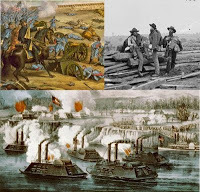 Persistence of memory?With so much water under the bridge, I blithely assumed there was a general consensus on the war's W's and H--where it was fought, when it was fought, how it was fought, who fought it and why. As I read and read, I came to understand that none of these questions have a definitive answer yet, not among scholars and not among average Joes. Indeed, from slavery to states' rights, the question of why the war was fought is still contentious enough to provoke tantrums, if not actual fistfights. (In contrast, when's the last time a Brit brawled with an American over the Troubles in the Colonies?)
Persistence of memory?With so much water under the bridge, I blithely assumed there was a general consensus on the war's W's and H--where it was fought, when it was fought, how it was fought, who fought it and why. As I read and read, I came to understand that none of these questions have a definitive answer yet, not among scholars and not among average Joes. Indeed, from slavery to states' rights, the question of why the war was fought is still contentious enough to provoke tantrums, if not actual fistfights. (In contrast, when's the last time a Brit brawled with an American over the Troubles in the Colonies?)
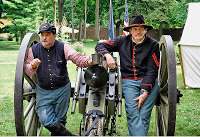 Still in the fightWhich leads one to wonder whether the Civil War actually ended at all. An alien visiting our planet (not knowing our penchant for re-enactments) after witnessing battles between men in blue and grey uniforms with their cannons and explosions of gun powder and then reading heated and vituperative rhetoric on internet blogs might be forgiven for concluding that the Civil War has stretched centuries. The war's significance and origination are still debated endlessly, from the depths of doctoral theses to the scratchy static of call-in talk radio. On discussion boards, William Tecumseh Sherman is characterized anywhere from avenging angel to Genghis Khan and Hitler rolled into one. Further evidence of passions flying high is that one particular symbol of the war, the Confederate flag, is still so inflammatory and carries such heightened meaning that rational discourse about it is just not possible.
Still in the fightWhich leads one to wonder whether the Civil War actually ended at all. An alien visiting our planet (not knowing our penchant for re-enactments) after witnessing battles between men in blue and grey uniforms with their cannons and explosions of gun powder and then reading heated and vituperative rhetoric on internet blogs might be forgiven for concluding that the Civil War has stretched centuries. The war's significance and origination are still debated endlessly, from the depths of doctoral theses to the scratchy static of call-in talk radio. On discussion boards, William Tecumseh Sherman is characterized anywhere from avenging angel to Genghis Khan and Hitler rolled into one. Further evidence of passions flying high is that one particular symbol of the war, the Confederate flag, is still so inflammatory and carries such heightened meaning that rational discourse about it is just not possible.
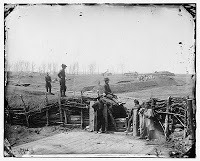 Like it was yesterday. In general, Americans tend to have amnesia about their own history. (Spanish-American War—what's that? A foreign army once burned the White House to the ground? Not a chance.) But when it comes to the Civil War, memories are fresh. Even the names we have for the conflict reflect on-going contention: "War Between the States," "War of Rebellion," "War of Northern Aggression," "War of Southern Independence." That trauma creates scar tissue is to be expected, but when people are still arguing over flags, definitions, and names a hundred and fifty years later, something is clearly unfinished. Reflection and analysis are always valuable; choler and bitterness reflect a festering wound still unhealed.
Like it was yesterday. In general, Americans tend to have amnesia about their own history. (Spanish-American War—what's that? A foreign army once burned the White House to the ground? Not a chance.) But when it comes to the Civil War, memories are fresh. Even the names we have for the conflict reflect on-going contention: "War Between the States," "War of Rebellion," "War of Northern Aggression," "War of Southern Independence." That trauma creates scar tissue is to be expected, but when people are still arguing over flags, definitions, and names a hundred and fifty years later, something is clearly unfinished. Reflection and analysis are always valuable; choler and bitterness reflect a festering wound still unhealed.
No, this war isn't over, and the cannons, even after a century and a half, are not yet silent. Not by a long shot. Happy sesquicentennial, America.
 Persistence of memory?With so much water under the bridge, I blithely assumed there was a general consensus on the war's W's and H--where it was fought, when it was fought, how it was fought, who fought it and why. As I read and read, I came to understand that none of these questions have a definitive answer yet, not among scholars and not among average Joes. Indeed, from slavery to states' rights, the question of why the war was fought is still contentious enough to provoke tantrums, if not actual fistfights. (In contrast, when's the last time a Brit brawled with an American over the Troubles in the Colonies?)
Persistence of memory?With so much water under the bridge, I blithely assumed there was a general consensus on the war's W's and H--where it was fought, when it was fought, how it was fought, who fought it and why. As I read and read, I came to understand that none of these questions have a definitive answer yet, not among scholars and not among average Joes. Indeed, from slavery to states' rights, the question of why the war was fought is still contentious enough to provoke tantrums, if not actual fistfights. (In contrast, when's the last time a Brit brawled with an American over the Troubles in the Colonies?) Still in the fightWhich leads one to wonder whether the Civil War actually ended at all. An alien visiting our planet (not knowing our penchant for re-enactments) after witnessing battles between men in blue and grey uniforms with their cannons and explosions of gun powder and then reading heated and vituperative rhetoric on internet blogs might be forgiven for concluding that the Civil War has stretched centuries. The war's significance and origination are still debated endlessly, from the depths of doctoral theses to the scratchy static of call-in talk radio. On discussion boards, William Tecumseh Sherman is characterized anywhere from avenging angel to Genghis Khan and Hitler rolled into one. Further evidence of passions flying high is that one particular symbol of the war, the Confederate flag, is still so inflammatory and carries such heightened meaning that rational discourse about it is just not possible.
Still in the fightWhich leads one to wonder whether the Civil War actually ended at all. An alien visiting our planet (not knowing our penchant for re-enactments) after witnessing battles between men in blue and grey uniforms with their cannons and explosions of gun powder and then reading heated and vituperative rhetoric on internet blogs might be forgiven for concluding that the Civil War has stretched centuries. The war's significance and origination are still debated endlessly, from the depths of doctoral theses to the scratchy static of call-in talk radio. On discussion boards, William Tecumseh Sherman is characterized anywhere from avenging angel to Genghis Khan and Hitler rolled into one. Further evidence of passions flying high is that one particular symbol of the war, the Confederate flag, is still so inflammatory and carries such heightened meaning that rational discourse about it is just not possible.  Like it was yesterday. In general, Americans tend to have amnesia about their own history. (Spanish-American War—what's that? A foreign army once burned the White House to the ground? Not a chance.) But when it comes to the Civil War, memories are fresh. Even the names we have for the conflict reflect on-going contention: "War Between the States," "War of Rebellion," "War of Northern Aggression," "War of Southern Independence." That trauma creates scar tissue is to be expected, but when people are still arguing over flags, definitions, and names a hundred and fifty years later, something is clearly unfinished. Reflection and analysis are always valuable; choler and bitterness reflect a festering wound still unhealed.
Like it was yesterday. In general, Americans tend to have amnesia about their own history. (Spanish-American War—what's that? A foreign army once burned the White House to the ground? Not a chance.) But when it comes to the Civil War, memories are fresh. Even the names we have for the conflict reflect on-going contention: "War Between the States," "War of Rebellion," "War of Northern Aggression," "War of Southern Independence." That trauma creates scar tissue is to be expected, but when people are still arguing over flags, definitions, and names a hundred and fifty years later, something is clearly unfinished. Reflection and analysis are always valuable; choler and bitterness reflect a festering wound still unhealed. No, this war isn't over, and the cannons, even after a century and a half, are not yet silent. Not by a long shot. Happy sesquicentennial, America.
Published on April 28, 2011 18:52
April 24, 2011
Real Books--A Vanishing Species?
According to Publisher's Weekly, this last February, for the first time ever, sales of e-books surpassed sales of all other forms of books—hardcover, trade paperback, mass market paperback and audiobooks. With sales increasing so rapidly, e-books will likely outsell all other categories of books put together by the middle of next year. So one must ask, is the physical book on its way to extinction?
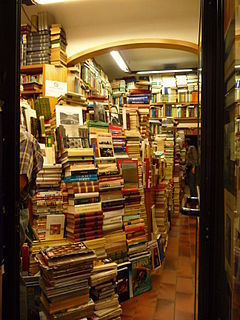 The next polar bears?
The next polar bears?
I confess to having a Kindle. My first was a hand-me-down from my husband (a true gadget guy) when he upgraded himself to a newer one. The early model had many design flaws, and after hearing enough complaints from me, my husband gave me the latest greatest version last Christmas.
I like my Kindle. It's readable, light in weight, and the battery lasts over a week. But what I appreciate most is that I can get books cheaply and whenever I'm in the mood. (Who doesn't like good value and instant gratification?) I don't have to plan ahead or even walk to my local bookstore or library. I click a button and I have a new book. Magic.
Did I mention it's light and e-books are cheap? I'm reading three books right now concurrently and was able to make progress on all of them while traveling the other coast visiting colleges with my high school daughter. Three real books (one of them 952 real pages) would have filled a good chunk of my suitcase and would have cost me $26.64 versus the $14.95 I paid. (To be fair, one of the books was a classic free in e-book format.)
So as a reader, I am beguiled by the good value and convenience e-books provide. But as a member of a literate society, I am disconcerted and uneasy at the breakneck speed they are superseding the real. Last month, the independent bookstore in my neighborhood closed its doors for the final time. Though it was already on its last legs due to chain stores and on-line competition, the advent of digital undoubtedly pounded the final nail in the coffin.
These days media of all types transform with bewildering speed, each one as changeable and enticing as a kaleidoscope, each one calling for our attention. In such an electronic wonderland, bookstores are scrambling to reinvent themselves as places that still have meaning. Which leads to this question: just how important is physical interaction with ink on paper?
When I walk into a great bookstore filled floor to ceiling with works old and new, it's like entering a cathedral. It's a place of communion and awe. Ideas and stories whisper and buzz from pages, fellow worshippers smile slightly, acknowledging communal connection. The bookstore owners, while perhaps not high priests, are at least deacons knowledgeable in the sacrament. For these basilicas of literature to disappear completely into the night, to be replaced by nail salons and Dunkin' Donuts, is a terrifying thought. Visiting a web page, clicking a button is just not the same. Even if I don't visit them regularly, like a soaring cathedral a bookstore's very presence fills a profound spiritual need. I might very well be better off tithing to a venerable bookstore than to my church.
Perhaps as bookstores slip away, libraries will fill the void. But libraries, chronically underfunded, are going digital, too. The most popular service any library provides now is free access to the Internet, and many libraries offer e-books on loan. E-books require no shelving, no special cataloging or tough plastic on their covers. They can be turned into large print books at no extra cost, and the books don't get torn, ruined, or lost. For people who have trouble getting to the library, especially the elderly, they can be a godsend. A collection of e-books can be managed at a fraction of the cost of physical ones. In ten years, I have to wonder, will physical libraries--with their community rooms and staff that give you recommendations and remember your children's names—even exist?
Last but not least, as an author I'm wary of e-books. For an e-book, the cover is merely a postage stamp-sized selling point, no longer a subliminal communication each time the reader picks up the book. With an e-book there is no heft and weight in the hand that telegraphs the kind of book to a reader. (Le Petit Prince! War and Peace!) After an e-book is read, it is rarely loaned out to a friend. It's never donated to a library; it's not traded in for another book at a used bookstore; it doesn't sit on a shelf beckoning recall or attention. With no physical reality, once an e-book is consumed, it only exists in the memory of the reader. With the vast quantity of books these days published in flimsy paperback rather than durable hardcover, the lifespan of a book is already short enough. In the digital world, an e-book becomes a pebble dropped in a pond with potentially very few ripples.
People need stories, from banal to transcendent, so although the delivery mechanism may change, some type of storytelling will continue. I've also read speculation that physical books will never entirely die off, that people will still value and acquire beautifully bound copies of books they really love. One's collection of books will become an important personal statement, not unlike the art hanging on one's wall. And because human beings need places of physical communion, I've no doubt we will create them in one form or another, from coffee houses to communal gardens. But as the kaleidoscope rotates, as bookstores fade and their elements transmute into something altogether different, the uncertainty is unsettling. In the rustle of a turned page I hear the whispers of scholars and students and poets and bibliophiles echoing across the centuries, all the way back to the moment Gutenberg first applied ink to his printing press. And I feel, very profoundly, a sense of loss.
 The next polar bears?
The next polar bears?I confess to having a Kindle. My first was a hand-me-down from my husband (a true gadget guy) when he upgraded himself to a newer one. The early model had many design flaws, and after hearing enough complaints from me, my husband gave me the latest greatest version last Christmas.
I like my Kindle. It's readable, light in weight, and the battery lasts over a week. But what I appreciate most is that I can get books cheaply and whenever I'm in the mood. (Who doesn't like good value and instant gratification?) I don't have to plan ahead or even walk to my local bookstore or library. I click a button and I have a new book. Magic.
Did I mention it's light and e-books are cheap? I'm reading three books right now concurrently and was able to make progress on all of them while traveling the other coast visiting colleges with my high school daughter. Three real books (one of them 952 real pages) would have filled a good chunk of my suitcase and would have cost me $26.64 versus the $14.95 I paid. (To be fair, one of the books was a classic free in e-book format.)
So as a reader, I am beguiled by the good value and convenience e-books provide. But as a member of a literate society, I am disconcerted and uneasy at the breakneck speed they are superseding the real. Last month, the independent bookstore in my neighborhood closed its doors for the final time. Though it was already on its last legs due to chain stores and on-line competition, the advent of digital undoubtedly pounded the final nail in the coffin.
These days media of all types transform with bewildering speed, each one as changeable and enticing as a kaleidoscope, each one calling for our attention. In such an electronic wonderland, bookstores are scrambling to reinvent themselves as places that still have meaning. Which leads to this question: just how important is physical interaction with ink on paper?
When I walk into a great bookstore filled floor to ceiling with works old and new, it's like entering a cathedral. It's a place of communion and awe. Ideas and stories whisper and buzz from pages, fellow worshippers smile slightly, acknowledging communal connection. The bookstore owners, while perhaps not high priests, are at least deacons knowledgeable in the sacrament. For these basilicas of literature to disappear completely into the night, to be replaced by nail salons and Dunkin' Donuts, is a terrifying thought. Visiting a web page, clicking a button is just not the same. Even if I don't visit them regularly, like a soaring cathedral a bookstore's very presence fills a profound spiritual need. I might very well be better off tithing to a venerable bookstore than to my church.
Perhaps as bookstores slip away, libraries will fill the void. But libraries, chronically underfunded, are going digital, too. The most popular service any library provides now is free access to the Internet, and many libraries offer e-books on loan. E-books require no shelving, no special cataloging or tough plastic on their covers. They can be turned into large print books at no extra cost, and the books don't get torn, ruined, or lost. For people who have trouble getting to the library, especially the elderly, they can be a godsend. A collection of e-books can be managed at a fraction of the cost of physical ones. In ten years, I have to wonder, will physical libraries--with their community rooms and staff that give you recommendations and remember your children's names—even exist?
Last but not least, as an author I'm wary of e-books. For an e-book, the cover is merely a postage stamp-sized selling point, no longer a subliminal communication each time the reader picks up the book. With an e-book there is no heft and weight in the hand that telegraphs the kind of book to a reader. (Le Petit Prince! War and Peace!) After an e-book is read, it is rarely loaned out to a friend. It's never donated to a library; it's not traded in for another book at a used bookstore; it doesn't sit on a shelf beckoning recall or attention. With no physical reality, once an e-book is consumed, it only exists in the memory of the reader. With the vast quantity of books these days published in flimsy paperback rather than durable hardcover, the lifespan of a book is already short enough. In the digital world, an e-book becomes a pebble dropped in a pond with potentially very few ripples.
People need stories, from banal to transcendent, so although the delivery mechanism may change, some type of storytelling will continue. I've also read speculation that physical books will never entirely die off, that people will still value and acquire beautifully bound copies of books they really love. One's collection of books will become an important personal statement, not unlike the art hanging on one's wall. And because human beings need places of physical communion, I've no doubt we will create them in one form or another, from coffee houses to communal gardens. But as the kaleidoscope rotates, as bookstores fade and their elements transmute into something altogether different, the uncertainty is unsettling. In the rustle of a turned page I hear the whispers of scholars and students and poets and bibliophiles echoing across the centuries, all the way back to the moment Gutenberg first applied ink to his printing press. And I feel, very profoundly, a sense of loss.
Published on April 24, 2011 17:00
April 13, 2011
Nose Tweaking, the Ultimate Insult
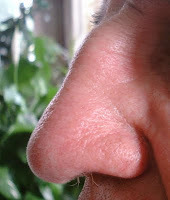 Tempted to tweak?
Tempted to tweak?Though difficult to imagine today, there was a time when grabbing someone's nose and giving it a twist was an insult so egregious it was likely to end in one of the parties' death. For centuries in both America and Europe, violation of a man's honor demanded retribution by duel, and though by the middle of the 19th century duels were theoretically illegal in all states, they were prevalent among the elite class in the South up until the Civil War.
Evidently the nose was a particularly sensitive spot for insult, probably because in those more modest times it was the part of the man always public and exposed and tended to be associated with a man's assertion, will and confidence. Present day psychologically-inclined historians even speculate that the nose was a stand-in for—how should we put this delicately?—another item of protuberant male anatomy synonymous with masculinity. So to insult the nose was to insult the man deeply to the core.
As we see in Beaufort 1849 nose tweaking is how Johnny finally goads Jasper into a duel:
"No," Johnny said, shaking off his host and turning back Jasper. "You'll fight me, Wainwright, or you're a coward." There was a collective intake of air at this, followed by several gasps as Johnny accentuated his defaming words by reaching out his hand to tweak his adversary's nose. Johnny might have succeeded if Jasper hadn't grabbed him hard by the wrist, or perhaps he did succeed for the briefest of instants, it was impossible for anyone besides the two involved to know for sure. But now the course was set. The insult was too grave to be ignored by even the most lenient of standards, and the standards for gentlemen in Beaufort, South Carolina were not lenient.
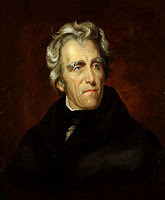 A personage no less than President Andrew Jackson possibly suffered the dishonor of a nose tweak—while he was president! (Where was the Secret Service?) Five years after Jackson had removed naval officer Lt Robert Randolph from military service, the disgraced man approached Jackson, made as if to shake his hand, and then reached out to the jutting appendage instead. (As we know from our twenty dollar bills, Jackson had a good-sized one.) In response, Jackson tried to beat Randolph with his cane but was prevented by the other men in the room. A friend immediately offered to go kill Randolph, but Jackson refused because one's honor could only be defended by oneself. Afterwards Jackson denied that Randolph or anyone else had ever successfully tweaked his nose, thus his honor had not been compromised. Jackson was no stranger to duels--in the course of his life, he fought in thirteen and had been wounded so frequently (with the bullets often not removable) it was said that he "rattled like a bag of marbles."
A personage no less than President Andrew Jackson possibly suffered the dishonor of a nose tweak—while he was president! (Where was the Secret Service?) Five years after Jackson had removed naval officer Lt Robert Randolph from military service, the disgraced man approached Jackson, made as if to shake his hand, and then reached out to the jutting appendage instead. (As we know from our twenty dollar bills, Jackson had a good-sized one.) In response, Jackson tried to beat Randolph with his cane but was prevented by the other men in the room. A friend immediately offered to go kill Randolph, but Jackson refused because one's honor could only be defended by oneself. Afterwards Jackson denied that Randolph or anyone else had ever successfully tweaked his nose, thus his honor had not been compromised. Jackson was no stranger to duels--in the course of his life, he fought in thirteen and had been wounded so frequently (with the bullets often not removable) it was said that he "rattled like a bag of marbles."I wonder which customs we feel strongly about today will cause people 150 years from now to scratch their heads and say, "You've got to be kidding!"
Published on April 13, 2011 10:21
April 10, 2011
Robert Smalls, the Sequel
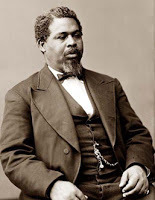 From The Improbable Story of Robert Smalls, you may recall that after Smalls piloted his way to freedom during the Civil War, he received $1500 as his share of the prize money for the captured boat, Planter. As related in Beaufort 1849, the town of Beaufort, South Carolina was one of the first taken by the Union forces, and the mansions of Beaufort were turned into Army headquarters, barracks and hospitals, preserving them from destruction later in Sherman's fiery path.
From The Improbable Story of Robert Smalls, you may recall that after Smalls piloted his way to freedom during the Civil War, he received $1500 as his share of the prize money for the captured boat, Planter. As related in Beaufort 1849, the town of Beaufort, South Carolina was one of the first taken by the Union forces, and the mansions of Beaufort were turned into Army headquarters, barracks and hospitals, preserving them from destruction later in Sherman's fiery path.After the war, the U.S. government imposed taxes on all property in Beaufort, starting from the date of occupation. (They didn't, ahem, offer to pay the owners of the houses rent for the use of their buildings during the same period.) This forced most antebellum residents of Beaufort to lose their homes because either they couldn't pay the taxes or had yet to return to Beaufort and had no knowledge that the taxes were in arrears. Grand mansions were auctioned by the government off at a fraction of their original cost to build.
Robert Smalls, however, benefited. With the proceeds of his prize money he purchased his former master's house on Prince Street in Beaufort. He also started a business, opening up a shop for freedmen (former slaves). He joined the Republican Party and was elected to the South Carolina House of Representatives, the South Carolina State Senate, and five times to the U.S. Congress. He participated in the writing of the new South Carolina state constitution and was largely considered the most powerful black man in the state for five decades.
The Reconstruction era was one of the more ignoble in our country's history. At first Southern white men were widely disenfranchised politically and economically. Then the tide turned and African-American men were disenfranchised even more virulently of many of their newly-won rights. (Women of both races would have to wait quite a while for their enfranchisement.) Though some positive things happened for freedmen, corruption was rampant. As the Reconstruction era wound down and Southern whites did their best to reduce African-American political power in order to regain their own (while the North turned a blind eye), Smalls was accused and convicted of bribery. He was subsequently pardoned as part of a deal that also dropped charges against Democrats who had been accused of election fraud. (I smell a set-up from the very beginning?) He spent the rest of his days in Beaufort as a shop owner and customs official.
My favorite part of Smalls' story is not his Civil War heroics nor his legislative record, but rather this anecdote. In 1875, long after the war, his former mistress--old, widowed, ill, and dreadfully impoverished--showed up at the house on Prince Street, perhaps believing it was still hers. Instead of turning her away, Smalls not only let her in, he ensconced her in her old bedroom and took care of her until her death in 1904, including personally serving her meals. Of all Smalls' notable achievements it is this compassion and kindness that I find most astonishing.
In Smalls' life we find war, politics, heroism, public service and scandal in a story that limns the tumult of our nation's struggle. We see a spectacular rise, an ignominious fall, and a humanity that shines across the centuries. Robert Smalls, Beaufort hero.
Published on April 10, 2011 10:48
April 9, 2011
The Night Before the Duel (excerpt)
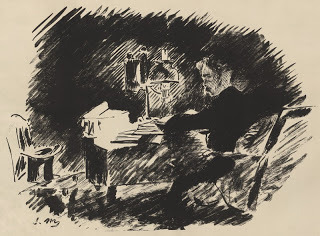 As the party guests were loaded on the boat, Jasper retired to his room to find Jim with a whale-oil lamp lit and a magazine on the table in front of him. "I hear you've landed yourself in some trouble," Jim said, barely glancing up when Jasper entered.Jasper shook his head. "I hate the South. I really, really hate it."Jim shrugged. "Then let's leave. Tonight.""If I did," Jasper said, "it would disgrace Henry until the end of his days.""As near as I can tell, he's not the one doing the dying," Jim pointed out. He eyed Jasper critically. "You know, you left the South but it didn't leave you. If your white man's honor is more important to you than your life, so be it. But don't pretend you're doing it for Henry. You're doing it for yourself."Jasper sat down heavily in a chair. Of course Jim was right. After Johnny's challenge, it was his own honor at stake, his own social acceptance in Beaufort, as marginal as it was, that now hung by a thread. The honor of a gentleman might be just a matter of custom and values but it was as real as a set of manacles. He either had to leave tonight with his tail between his legs or fight tomorrow. And he just wasn't ready to leave."Will you come to the duel?" Jasper asked at last. "Put me back together if any pieces fly off?"Jim nodded with resignation. "So long as he doesn't get you in the heart or the head, I can probably patch you up. Funny how you managed to avoid French husbands calling you out when you deserved it, and now, when you don't deserve it, you wind up with this. I told you that petticoat would cause you trouble. Admit it, I was right."Jasper had to smile. "You're always right, damn you.""And I'm also right about you wasting your time trying to change something that'll never change."Jasper considered the assertion. "When you weigh it against all the potential suffering, it's got to be worth a try." Jim shook his head as he stood up. "You really have to go?" Jasper said."You need me to hold your hand?" Jim asked."If I only have seven hours left to live, I could use some company."Jim snorted. "Now that I've seen the world, I can truly say what I've always believed: southern white men are the biggest idiots on earth. I don't know why we worry about freeing the slaves. A few more years of you all shooting holes in each other, and there won't be any of you left to be masters.""Have a nice ring shout," Jasper said sourly to Jim's back as he left. Of course Jim was right: he was an idiot to be caught up in what was essentially a lover's quarrel. Though he might recognize in Cara an unusual sensibility being squashed by the South's parochial culture, being maimed or killed by her rejected lover was hardly doing her a service. Yes, the whole farce was absurd. Unfortunately, there was no way out except through.Glancing at the table, Jasper picked up Jim's reading material and idly examined it. It was the maiden volume of a magazine called Æsthetic Papers, and the essay it was opened to was titled, "Resistance to Civil Government," by some New England transcendentalist named Thoreau. Wondering where Jim had gotten it, Jasper pulled his reading glasses out of his waistcoat and sat down to read about the moral imperative not to cooperate with an immoral government.
As the party guests were loaded on the boat, Jasper retired to his room to find Jim with a whale-oil lamp lit and a magazine on the table in front of him. "I hear you've landed yourself in some trouble," Jim said, barely glancing up when Jasper entered.Jasper shook his head. "I hate the South. I really, really hate it."Jim shrugged. "Then let's leave. Tonight.""If I did," Jasper said, "it would disgrace Henry until the end of his days.""As near as I can tell, he's not the one doing the dying," Jim pointed out. He eyed Jasper critically. "You know, you left the South but it didn't leave you. If your white man's honor is more important to you than your life, so be it. But don't pretend you're doing it for Henry. You're doing it for yourself."Jasper sat down heavily in a chair. Of course Jim was right. After Johnny's challenge, it was his own honor at stake, his own social acceptance in Beaufort, as marginal as it was, that now hung by a thread. The honor of a gentleman might be just a matter of custom and values but it was as real as a set of manacles. He either had to leave tonight with his tail between his legs or fight tomorrow. And he just wasn't ready to leave."Will you come to the duel?" Jasper asked at last. "Put me back together if any pieces fly off?"Jim nodded with resignation. "So long as he doesn't get you in the heart or the head, I can probably patch you up. Funny how you managed to avoid French husbands calling you out when you deserved it, and now, when you don't deserve it, you wind up with this. I told you that petticoat would cause you trouble. Admit it, I was right."Jasper had to smile. "You're always right, damn you.""And I'm also right about you wasting your time trying to change something that'll never change."Jasper considered the assertion. "When you weigh it against all the potential suffering, it's got to be worth a try." Jim shook his head as he stood up. "You really have to go?" Jasper said."You need me to hold your hand?" Jim asked."If I only have seven hours left to live, I could use some company."Jim snorted. "Now that I've seen the world, I can truly say what I've always believed: southern white men are the biggest idiots on earth. I don't know why we worry about freeing the slaves. A few more years of you all shooting holes in each other, and there won't be any of you left to be masters.""Have a nice ring shout," Jasper said sourly to Jim's back as he left. Of course Jim was right: he was an idiot to be caught up in what was essentially a lover's quarrel. Though he might recognize in Cara an unusual sensibility being squashed by the South's parochial culture, being maimed or killed by her rejected lover was hardly doing her a service. Yes, the whole farce was absurd. Unfortunately, there was no way out except through.Glancing at the table, Jasper picked up Jim's reading material and idly examined it. It was the maiden volume of a magazine called Æsthetic Papers, and the essay it was opened to was titled, "Resistance to Civil Government," by some New England transcendentalist named Thoreau. Wondering where Jim had gotten it, Jasper pulled his reading glasses out of his waistcoat and sat down to read about the moral imperative not to cooperate with an immoral government.
Published on April 09, 2011 15:00
April 7, 2011
The Delights of 19th Century Literature Should Not be Inflicted on the Young
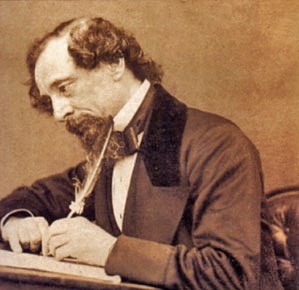 Dickens--Torturer or Genius?"Nooooooo," I can hear a million high schoolers cry. "Don't make us read one of those books. We'd rather set our hair on fire and wrestle fat pigs while calculating azimuths than touch one of those again."
Dickens--Torturer or Genius?"Nooooooo," I can hear a million high schoolers cry. "Don't make us read one of those books. We'd rather set our hair on fire and wrestle fat pigs while calculating azimuths than touch one of those again."So sad. Too many people have been flung into the dungeons of "real" literature by being given the wrong book at the wrong time. If this happened to you, causing you to resolutely turn your back on what people solemnly intone as "the classics," I urge you to reconsider!
Part of why I decided to write a book set in 1849 was due to my deep love of 19th century literature. But each author—whether it be Dickens, Austen or Tolstoy—takes some getting used to. The diction, vocabulary, and even sentence structure, while not as gnarly as Shakespeare, are distant enough from our own to require acclimation to an unfamiliar terrain. But once you make the two-century leap, remarkable satisfactions await.
Let's start with Dickens. Brilliant man, truly, but he can be uneven--after all, he wrote a heck of a lot. Many high schools shove Great Expectations down their students' throats, (I did it to my son—sorry, sweetie!) probably because it's a coming of age novel and relatively short (for Dickens.) The problem is that while the first hundred pages are great and the last hundred pages are exciting, the middle two hundred can drag like a dying horse hauling a comatose Godzilla. The most accessible Dickens novel, hands down, is A Christmas Carol. Yes, everyone has seen a trillion versions of it, but the real thing is funny, lively, and contains both fabulous character sketches and brilliant descriptions. And did I mention it's short? This is the Dickens teenagers should cut their teeth on. Once you have that under your belt (and let's say you're over 25), you could try A Tale of Two Cities (I love Sydney Carton, a sarcastic 20th century type of guy trapped in the 18th) or, my absolute favorite, Bleak House. (The worst thing about this book is its title. Trust me.) I advise waiting to read Bleak House until you're 35, though. When you're done with the book, watch the 2005 BBC version. Fabulous.
We'll move on to Austen. In my opinion, her most accessible book is easily Pride and Prejudice. While I enjoy and admire all six of Austen's complete novels, this is the one I can reread every few years, each time smiling at the humor and savoring her incredible turn of phrase. Teen girls who are big readers will lap up this one from age 14 on. The rest of the world might want to wait until age 28 or so.
There are, of course, scores of 19th century literary possibilities. I'm a fan of Trollope's Palliser series (for ages 30+, unless you just love Victorian literature.) I thought Vanity Fair readable enough, and The Woman in White a pretty good mystery. The Adventures of Sherlock Holmes I have read every dozen years, starting at age 12. Moby Dick and The Scarlet Letter left me cold, but The House of Seven Gables was interesting, the brooding gothic of Jane Eyre holds up pretty well (keep reading until you get to the fires—it's worth it) and Melville's novella, Bartleby, The Scrivener, is nothing short of astonishing. After you've dipped your toes into Victorian literary waters and you're ready for a longer swim, it's time to tackle the big kahunas. There are reasons why Anna Karenina (better than War and Peace) and Les Miserables are classics. Get into their rhythm and swing and you will find two stories that echo and reverberate across the centuries. I think they are best appreciated after age 28—maybe even later. Following these, if you're a true Victorian nut and the thought of a sentence lasting half a page thrills you, it's time to talk Henry James. But inflict the guy on17 year olds? How cruel can you be?
What is your favorite piece of 19th century literature, and at what age should it be read?
Published on April 07, 2011 18:30
April 4, 2011
Charming Cemetery--an Oxymoron?
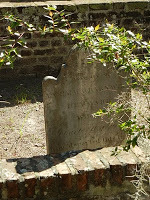 "Charming cemetery" may indeed be an oxymoron, but in my mind the cemetery in the churchyard of St. Helena's in Beaufort is downright winsome. It's why I set two important scenes of Beaufort 1849 there--the place exudes gravitas and history. I don't even mind walking by this graveyard in the moonlight, which I did several times my last trip. Any ghosts I saw were all the friendly kind. At St. Helena's the dead are part of the community, their jumbled, worn headstones still in conversation each week with the living.
"Charming cemetery" may indeed be an oxymoron, but in my mind the cemetery in the churchyard of St. Helena's in Beaufort is downright winsome. It's why I set two important scenes of Beaufort 1849 there--the place exudes gravitas and history. I don't even mind walking by this graveyard in the moonlight, which I did several times my last trip. Any ghosts I saw were all the friendly kind. At St. Helena's the dead are part of the community, their jumbled, worn headstones still in conversation each week with the living.(photo by Melinda Adams)
Published on April 04, 2011 16:56
April 3, 2011
The Improbable Story of Robert Smalls, Beaufort Hero
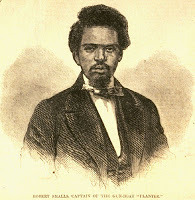 @font-face { font-family: "Cambria";}p.MsoNormal, li.MsoNormal, div.MsoNormal { margin: 0in 0in 0.0001pt; font-size: 12pt; font-family: "Times New Roman"; }div.Section1 { page: Section1; }This is a piece of history I wish I could've incorporated into Beaufort 1849 but the timing just wouldn't work.
@font-face { font-family: "Cambria";}p.MsoNormal, li.MsoNormal, div.MsoNormal { margin: 0in 0in 0.0001pt; font-size: 12pt; font-family: "Times New Roman"; }div.Section1 { page: Section1; }This is a piece of history I wish I could've incorporated into Beaufort 1849 but the timing just wouldn't work. Robert Smalls began his life in 1839 in a slave cabin in Beaufort. In his teens he was sent to Charleston and hired out to work for wages that his owner would collect, a not uncommon practice. He worked in a hotel, as a lamplighter and then on the wharves and docks of Charleston. He married, had children, and eventually worked his way up to a wheelman, learning to pilot the Charleston harbor. Though undeniably constrained by the realties of slavery, his life had much more scope for initiative and resourcefulness than the average slave.
Now comes the exciting part. During the Civil War, Smalls was assigned as wheelman on the steamer, Planter, an armed dispatch and transport boat used by the Confederacy. On the night of May 13, 1862, the white crew decided to spend the night on shore, probably to amuse themselves with the distractions Charleston had to offer. Robert Smalls and the seven other slave crewmen took the opportunity to strike. With a Confederate flag flying and Smalls dressed in a captain's uniform, at 3 a.m. Smalls backed the boat out of her slip and made way to a nearby wharf where the families of Smalls and other crew members were hiding in wait. After loading the contraband passengers, Smalls brazenly chugged the boat past the five Confederate forts guarding the harbor. Then, taking down the Confederate flag and hoisting a white sheet in its stead, he made a beeline for the blockading Federal fleet just beyond. Luckily the first US Navy ship he encountered noticed the sheet moments before it was set to open fire on the renegade vessel.
Smalls turned Planter over to the U.S. Navy, along with its cargo of artillery and explosives. Even more valuable, he handed over a codebook that revealed Confederacy secret signals and placement of mines and torpedoes around Charleston harbor. In addition, due to his comprehensive familiarity with the area, Smalls was able to offer extensive information about the harbor's defenses.
The North was delighted! Smalls was an overnight hero and media sensation in Northern papers. Congress passed a bill awarding Smalls and the other seven crewmen $1500 in prize money for the captured vessel. Two weeks after the daring escape Smalls even met Abraham Lincoln himself, who was impressed by Smalls's account of his exploits. Smalls's deeds became a major argument for allowing African Americans to serve in the Union Army, and Smalls himself served as a pilot for the Union forces. In 1863 Smalls became the first black Captain of a vessel in the service of the United States.
This is just the beginning of Smalls's accomplishments, but the rest will have to wait for another blog post. I'll just observe that as much as Smalls was lauded by the North, he was in equal parts reviled by the South. In a war, one side's hero is almost necessarily the other side's varlet.
Published on April 03, 2011 11:33
March 31, 2011
The Benefits of a Brisk Wind
 On my last trip to Beaufort Spanish moss was everywhere. It hung from the live oaks but also from other shrubbery and even telephone wires. It was thicker and even more evocative than usual, catching the light in its swaying, ever modulating green-gray wisps.
On my last trip to Beaufort Spanish moss was everywhere. It hung from the live oaks but also from other shrubbery and even telephone wires. It was thicker and even more evocative than usual, catching the light in its swaying, ever modulating green-gray wisps.But the residents complained that the moss was too prolific. Now Spanish moss is not a parasite. (It is technically not even moss but a bromeliad.) But even as an epiphyte, absorbing nutrients and water from the air and rainfall, if it gets too thick, it weighs down branches and prevents light from getting to the leaves of its host.
The owners of one grand home had hired someone with a cherry-picker to strip every last piece of moss from their tall oaks. But I have to say those trees looked awfully bare and plain after that.
What the town needed, residents said, was a good storm to blow the moss out of the trees. Then there would be balance again. Only with storms could the trees and the moss naturally live in harmony.
Published on March 31, 2011 09:06
March 30, 2011
Mental travel
Once I realized that Beaufort was indubitably the location of the story I had in me to tell, naturally I had a burning passion to see the place. However, due to family responsibilities and the sheer cost of travel, I had to postpone my first visit for many more months than I liked.
What to do? I read everything about the city I could get my hands on--from dry history books, to on-line newspapers, to old fiction set there. Since the San Francisco Public Library is curiously lacking in materials about Beaufort, South Carolina, I had to buy many more books than I liked, but now these volumes are old friends.
In my near frenzy to see the place, I took to walking the streets via Google Maps street view. I would make my way down Craven Street into the Old Point, glimpsing houses through the shrubbery, getting frustrated with dead ends, trying to get a sense of what this town was all about.
So when I actually got to Beaufort the first time, it was quite a surreal experience. To be surrounded by an entire town that was simultaneously foreign and familiar created a dichotomy more unnerving than I expected. In a dream-like way I knew the order of the streets, that if I turned left here I would see such and such building, that if I continued straight for three blocks I would find the river. I recognized house after house I'd never seen, stepping along roads where even the asphalt was strangely familiar.
Ah, but as you might guess, the real thing easily outstrips the virtual. Google maps couldn't capture the light through trees, the richness of the resurrection ferns, the allure of the Spanish moss. It couldn't reproduce the timeless serenity of the antebellum homes, the play of the tidal river, or even offer me up a dolphin. It could convey structure but not soul.
Maybe someday we humans will master virtual realities complete enough to truly fool our senses, like the holodecks on Star Trek. Until then, the best form of mental travel might very well be a good book.
What to do? I read everything about the city I could get my hands on--from dry history books, to on-line newspapers, to old fiction set there. Since the San Francisco Public Library is curiously lacking in materials about Beaufort, South Carolina, I had to buy many more books than I liked, but now these volumes are old friends.
In my near frenzy to see the place, I took to walking the streets via Google Maps street view. I would make my way down Craven Street into the Old Point, glimpsing houses through the shrubbery, getting frustrated with dead ends, trying to get a sense of what this town was all about.
So when I actually got to Beaufort the first time, it was quite a surreal experience. To be surrounded by an entire town that was simultaneously foreign and familiar created a dichotomy more unnerving than I expected. In a dream-like way I knew the order of the streets, that if I turned left here I would see such and such building, that if I continued straight for three blocks I would find the river. I recognized house after house I'd never seen, stepping along roads where even the asphalt was strangely familiar.
Ah, but as you might guess, the real thing easily outstrips the virtual. Google maps couldn't capture the light through trees, the richness of the resurrection ferns, the allure of the Spanish moss. It couldn't reproduce the timeless serenity of the antebellum homes, the play of the tidal river, or even offer me up a dolphin. It could convey structure but not soul.
Maybe someday we humans will master virtual realities complete enough to truly fool our senses, like the holodecks on Star Trek. Until then, the best form of mental travel might very well be a good book.
Published on March 30, 2011 09:20



